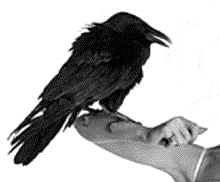Art and Biomedicine:
Beyond the Body
Monday, 3 September, 2007
The Royal Danish Academy of Fine Arts
Kongens Nytorv
Copenhagen
Aim:
A one-day symposium about creative visual practices at the frontiers of biomedicine organised by the Medical Museion at the University of Copenhagen in partnership with The Schools of Visual Art, The Royal Danish Academy of Fine Arts.
Current biomedicine is a vast complex of invisibles: microscopic entities such as viruses and proteins, difficult concepts such as genomics and proteomics, unwieldy databases of information, and large-scale economic issues such as the practice of pharmaceutical companies in a globalised economy.
The exploratory work of artists in relation to the body, biology and medical practice is increasingly significant to both historians and practitioners of medicine, and artists are beginning to understand the exciting arenas opening up in biotechnology and biomedicine.
Recent biomedical sci-art projects funded by the Wellcome Trust, the Artists-in-Labs project of the Zurich School of Art and Design and the radical initiatives of Critical Art Ensemble among others show a rapidly emerging field of interdisciplinary practice. Artists and designers are skilled conceptualists who can explore these ideas rather than simply `explain' them.
The conference Art and Biomedicine: Beyond the Body will give voice to the people practicing in this field - artists, biomedical practitioners, exhibition curators, art historians, art teachers and funders will all be speaking. This event will be of interest to researchers and practitioners in the life sciences and in biomedicine, fine arts, history and philosophy of science, material and visual culture and anthropology, history of art and aesthetics, and those interested in developing interdisciplinary practices and collaborations.
|
Programme:
10:00 Introduction: Mikkel Bogh, Rector of the Schools of Visual Arts, The Royal Danish Academy of Fine Arts, and Thomas Söderqvist, Director of the Medical Museion, University of Copenhagen.
10:20 Session One (speakers 30 min each + 10 min questions)
Ingeborg Reichle, Berlin-Brandenburg Academy of Sciences and Humanities
Wolfgang Knapp, Art in Context, University of the Arts, Berlin
Steve Kurtz, Critical Arts Ensemble
12:30 Lunch with projections of Steve Kurtz's film Marching Plague (17 min) in hall
13:30 Session Two (speakers 30 min each + 10 min questions)
Richard Wingate, UK Medical Research Council Centre, King's College, London
Ben Fry, MIT Media Lab, Boston
Ken Arnold, Wellcome Trust, London
15:40 Coffee / tea
16:00 Keynote Address
James Elkins, Department of Art History, Theory, and Criticism of the Art Institute of Chicago
Critical Art Ensemble's film Marching Plague (USA/2006/17 min) will be
shown during the day at the conference.
A new sound work by Jacob Kirkegaard commissioned for the conference will
be presented at the Medical Museion, Bredgade 62.
Organisers:
The Medical Museion at the University of Copenhagen is a combined academic unit and medical museum with extensive collections. Our field is the history of health and disease in a cultural perspective, with a focus on the material and iconographic culture of recent biomedicine.
(Our blog: corporeality.net/museion)
The Royal Danish Academy of Fine Arts, Schools of Visual Arts is a higher arts education institution under the Ministry of Culture offering a six-year MFA programme.
Art and Biomedicine: Beyond the Body is part funded by BioCampus, one of four research priority areas at the University of Copenhagen covering interdisciplinary research about the way in which biomedicine and biotechnology is developed, applied, regulated and understood in contemporary society.
For further info, see: artandbiomedicine
(after approx. 15 June).
|
